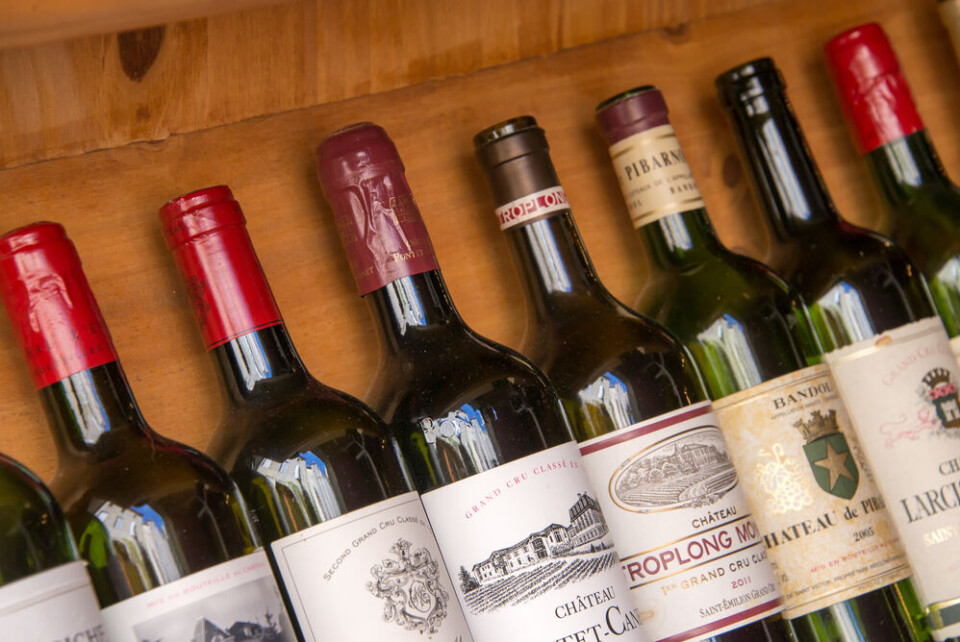-
France targets imports from South America over banned chemical concerns
Avocados, mangoes, and cherries among food items set to be tested before entry
-
Hazelnut, chocolate… pork? France’s traditional galette des rois gets a modern makeover
January 6 marks Epiphany and the famous galette, eaten across France
-
Duck Cold! Four French phrases to use when it is freezing outside
We remind you of French expressions to use to describe the drop in temperature
AOP or IGP, doux or liquoreux…How to interpret French wine labels
A little knowledge can go a long when choosing wine, says independent wine grower Jonathan Hesford

One thing that has always intimidated newcomers to wine is the label on the bottle. Many people, even after drinking wine for many years, find wine labels confusing and misleading.
Despite many changes and improvements to the way wine is marketed, the label hasn’t improved much. Is there a reason why wine labels are difficult to understand?
When people choose a bottle of wine, their choice is based first on colour, then price and then style of the wine.
We know the colour and the price before we buy the bottle but we have to make a guess at the flavour of the wine in it, unless we have the rare chance to taste it beforehand.
The label is supposed to be our best indication of the style but so often it doesn’t tell us what we want to know – whether we will enjoy the wine.
French wine is particularly difficult to interpret from the label because it focuses on telling us the origin, rather than explaining the taste. The consumer requires knowledge of the styles of wines made in the various regions and appellations of France.
Read more: ‘Wine for people in love’: Exploring France’s two most romantic towns
New World wines gained popularity in Britain partly because their labels focused on the grape varieties used to make the wine, not on the location of the vineyard, therefore requiring much less knowledge of wine.
Alsace used to be the only region where grape varieties are named on the label but now a lot of wines in the Indication Géographique Protégée (IGP) category display the grape varieties used.
Other terms like sec (dry), doux or liquoreux (sweet), moelleux (medium sweet), Vendange Tardive (late harvest, therefore sweet) and Vin Doux Naturel (sweet fortified) give us an indication of sweetness but not all sweet wines have these words on the label.
Most French consumers will know the styles of the better known and biggest wine regions. However, deeper knowledge of the different appellations is useful in getting value for money or a more particular style.
Additionally, some wines only mention their AOP (Appellation d'Origine Protégée), not the larger region, especially if the larger region isn’t that prestigious, for example, the AOPs of the southern Rhone, such as Gigondas, Cairanne and Rasteau. One particularly confusing AOP is Pouilly-Fumé. People mistake it for Pouilly-Fuissé. The former is a Sauvignon blanc from Pouilly-sur-Loire and the latter is a Chardonnay from Pouilly in Burgundy, or the Macon, to be precise.
Read more: Dry January in France: how our readers are changing drinking habits
Having a decent understanding and knowledge of the general flavours and styles of each region is necessary when choosing French wines. Firstly one needs to know roughly what style of wine is made in each region and secondly, which region an appellation belongs to. For example, Loire red wines tend to be light and fruity, therefore knowing that Chinon and Sancerre are in the Loire tells you the style.
Deeper knowledge gives more insight. Knowing that Chinon is made from Cabernet franc but Sancerre rouge is made from Pinot noir tells you more about what flavours to expect.
At least today we have smartphones that can quickly tell us the location and what style of wine is made in every appellation, rather than having to
retain an encyclopaedic knowledge. However, knowing that Chinon is made from Cabernet franc is not much use if you don’t know what Cabernet franc tastes like.
Most French wine regions have a hierarchy of AOPs, based on the idea that certain pieces of land give rise to better wines. While there is some basis to that idea, the AOP hierarchy is also a marketing tool for higher prices.
In some cases there is a correlation between the prestige of the AOP and the quality of the wine but often the relationship is hazy and consumers are coerced into overpaying for a “fancier” AOP. It’s usually a waste of money to buy the cheapest wine from a famous AOP.
Read more: Supermarket rosé recalled in France due to risk of shards of glass
This is where knowledge of which producers consistently make the most impressive wines in a given region comes into play. Wine quality, or originality, is not determined just by the piece of land where the grapes were grown. Not all vineyards within the AOP are equal. Some estates put a lot more effort into their vineyard management.
Some producers are far more obsessed with quality than cutting costs and some winemakers are simply more skilled than others. Many wine connoisseurs will argue that the producer is much more important than the AOP, particularly in regions like Bourgogne with its many tiny AOPs or in the Languedoc-Roussillon with its massive ones.
Next month I will write about other information or clues that you might find on a label.
Jonathan Hesford has a Postgraduate Diploma in Viticulture and Oenology from Lincoln University, New Zealand and is the owner, vigneron and winemaker of Domaine Treloar in the Roussillon. www.domainetreloar.com
Related stories:
How winemakers in France are reducing pesticide use
























